Commercial Leases
Herrington Carmichael has one of largest property law teams in the South-East of England. Supporting our clients across a range of specailst legal services.
Business Leases
Our Landlord and Tenant team is made up of specialist lawyers with a depth of expertise across the whole range of Landlord and Tenant matters from advising companies or individuals that own or occupy commercial property, those who are looking to take on a business lease or interest in commercial property, assignments of existing leases, the subletting of leases to ongoing leasehold management of property investment portfolios including licences, consents and surrenders.
Working alongside our Firm’s other exceptional departments, such as Real Estate, Dispute Resolution, Corporate and Banking means we can offer a multi-disciplinary service at the highest quality to all of our clients- all in the same place.
The Landlord and Tenant team combines technical expertise across all aspects of the property sector, including: offices, retail, leisure and hospitality, industrial and logistics and healthcare.

Agreements for Lease
An Agreement for Lease is used where a landlord and tenant cannot enter into a lease immediately, but the parties want to ensure that the other is contractually committed to do so at a later date. Agreements for Lease are often entered into where it has been agreed that a Landlord will carry out certain works to a property before lease completion or where a tenant is required to obtain planning permission, for example for a change of use. These aspects are known as the ‘conditionality’ under the Agreement for Lease i.e. the conditions upon which must be satisfied before the lease will be entered into. Upon satisfaction of the conditionality, the parties will then be obliged to enter into the lease on the terms set out in the Agreement.
Break Clauses
Depending on the length of the contractual term in the lease, a landlord or tenant may want a right to terminate the lease early. A lease can have break rights on set dates or there can be a rolling break right, which means that the lease can be terminated at any time from a set date in the lease. The party terminating the lease would usually be required to provide written notice to the other and this typically must be served within a minimum number of months prior to the break date. If a tenant wants to terminate the lease, there are usually other conditions that must be complied with in order for them to bring the lease to an end – such as paying the annual rent up to the date of the break as well as returning the property to the landlord free from occupation. One thing to bear in mind is that once a break notice has been served, it cannot be unilaterally withdrawn.
Heads of Terms
Heads of Terms set out the key terms agreed between the parties in a commercial transaction (most often without being legally binding). It is not a requirement to agree heads of terms at the outset, but by doing so the parties can agree the main commercial points (such as in the case of a lease- the term, rent, rent reviews, break provisions, repairing obligations and so on). The heads of terms will form the starting point for the solicitors to draft the necessary legal documentation and thereby should result in the need for less negotiation between the parties and a quicker and more efficient transaction.
Landlord & Tenant Disputes
We have specialist property dispute lawyers who can advise you of your options to achieve a resolution of your property dispute which may include Court proceedings, arbitration, mediation and other dispute resolution alternatives.
Where litigation is inevitable, cases are pursued with both vigour and pragmatism.
We can assist you in giving practical advice on how to manage your relationship with your tenant or landlord, prepare the documentation you need and ensure that if court proceedings become necessary they are handled in a cost effective and time efficient manner.
Licences to Alter
A commercial lease often requires a tenant to obtain the landlord’s consent to carry out certain works at the property. A licence to alter documents the landlord’s formal consent to the approved tenant works and will set out any conditions that the tenant must comply with in carrying out the works. A licence to alter is an important record for both parties as it will detail the works the landlord has consented to so that the tenant can evidence compliance with its obligations under the lease and also provides the landlord with a written record of the works undertaken which is useful for reinstatement purposes in respect of the tenant’s obligations under the lease at the end of the term.
Licence to Occupy
A licence to occupy is permission for one party (the licensee) to do something on another’s (the licensor’s) property. A licence to occupy is often used to document a right to occupy business premises on a short-term basis and can generally be put in place quickly if an occupier requires occupation immediately. A licence to occupy does not grant the licensee with exclusive possession (which a lease does as a lease creates an interest in land which a licence does not) and it does not offer the same security to the parties, as it is usually drafted so that it can be terminated on notice. A licence to occupy should therefore be used to permit non-exclusive occupation of a commercial property on a short-term basis.
Rent Deposits
Most business leases (particularly those with a longer term of more than 3 or 5 years) will contain rent review provisions. Rent reviews allow for the periodical adjustment of commercial rents at whatever intervals and whichever method of review is agreed between the parties to a lease.
Revaluation of the rent in the open market is the most common method of recalculating a commercial rent at a review date. Other methods of review, include a review in line with typical levels of inflation, determined by a price index i.e. retail prices index (RPI)or consumer prices index (CPI). Tenants should note that most modern commercial leases will include ‘upwards only’ rent reviews. This means the annual rent will only rise or stay the same; they will never be lowered.
Rent Reviews
Most business leases (particularly those with a longer term of more than 3 or 5 years) will contain rent review provisions. Rent reviews allow for the periodical adjustment of commercial rents at whatever intervals and whichever method of review is agreed between the parties to a lease.
Revaluation of the rent in the open market is the most common method of recalculating a commercial rent at a review date. Other methods of review, include a review in line with typical levels of inflation, determined by a price index i.e. retail prices index (RPI)or consumer prices index (CPI). Tenants should note that most modern commercial leases will include ‘upwards only’ rent reviews. This means the annual rent will only rise or stay the same; they will never be lowered.
Security of Tenure
Security of Tenure is a right granted under the Landlord and Tenant Act 1954 which provides a tenant under a commercial lease with an automatic right to remain in occupation of the property after the expiry of the contractual term of the lease (known as the ‘holding over period’). The tenant will also benefit from a right, under statute, to request a renewal lease from the landlord on substantially similar terms to those in its existing lease.
The Security of Tenure provisions can however be excluded from a commercial lease by way of a statutory procedure prior to completion of the lease, so that a tenant will be required to vacate the property at the end of the contractual term.
Service Charges
A service charge is a mechanism contained in a lease that allows the landlord to recover its running costs from its tenants in providing various services, as set out in the lease. The parties are free to negotiate the service charge provisions and the ultimate form will largely depend on the bargaining power of each party to the lease.
There is a direct conflict between a landlord and tenant in relation to the service charge provisions because the landlord’s primary purpose will be recovery of costs to enable it to achieve a “clear” rent (i.e. all expenses paid by the tenant) and the tenant’s primary purpose will be setting out the landlord’s duties in relation to the services it expects to be carried out at the building (or the centre/estate). The tenant would therefore want to remove from the service charge provisions items that it thinks it should be paid for by the landlord as it has the reversionary interest in the relevant property.
Schedules of Condition
A schedule of condition is used where the tenant’s repairing obligation under a lease, is to be limited to a particular standard of repair. This is typically evidenced by a photographic schedule of the condition of the property which is annexed to the lease and identifies the condition of the property as at the date the schedule was prepared. The tenant will only be required to return the property to the landlord in the condition shown in the schedule.
Agreements for Lease
An Agreement for Lease is used where a landlord and tenant cannot enter into a lease immediately, but the parties want to ensure that the other is contractually committed to do so at a later date. Agreements for Lease are often entered into where it has been agreed that a Landlord will carry out certain works to a property before lease completion or where a tenant is required to obtain planning permission, for example for a change of use. These aspects are known as the ‘conditionality’ under the Agreement for Lease i.e. the conditions upon which must be satisfied before the lease will be entered into. Upon satisfaction of the conditionality, the parties will then be obliged to enter into the lease on the terms set out in the Agreement.
Break Clauses
Depending on the length of the contractual term in the lease, a landlord or tenant may want a right to terminate the lease early. A lease can have break rights on set dates or there can be a rolling break right, which means that the lease can be terminated at any time from a set date in the lease. The party terminating the lease would usually be required to provide written notice to the other and this typically must be served within a minimum number of months prior to the break date. If a tenant wants to terminate the lease, there are usually other conditions that must be complied with in order for them to bring the lease to an end – such as paying the annual rent up to the date of the break as well as returning the property to the landlord free from occupation. One thing to bear in mind is that once a break notice has been served, it cannot be unilaterally withdrawn.
Heads of Terms
Heads of Terms set out the key terms agreed between the parties in a commercial transaction (most often without being legally binding). It is not a requirement to agree heads of terms at the outset, but by doing so the parties can agree the main commercial points (such as in the case of a lease- the term, rent, rent reviews, break provisions, repairing obligations and so on). The heads of terms will form the starting point for the solicitors to draft the necessary legal documentation and thereby should result in the need for less negotiation between the parties and a quicker and more efficient transaction.
Landlord & Tenant Disputes
We have specialist property dispute lawyers who can advise you of your options to achieve a resolution of your property dispute which may include Court proceedings, arbitration, mediation and other dispute resolution alternatives.
Where litigation is inevitable, cases are pursued with both vigour and pragmatism.
We can assist you in giving practical advice on how to manage your relationship with your tenant or landlord, prepare the documentation you need and ensure that if court proceedings become necessary they are handled in a cost effective and time efficient manner.
Licences to Alter
A commercial lease often requires a tenant to obtain the landlord’s consent to carry out certain works at the property. A licence to alter documents the landlord’s formal consent to the approved tenant works and will set out any conditions that the tenant must comply with in carrying out the works. A licence to alter is an important record for both parties as it will detail the works the landlord has consented to so that the tenant can evidence compliance with its obligations under the lease and also provides the landlord with a written record of the works undertaken which is useful for reinstatement purposes in respect of the tenant’s obligations under the lease at the end of the term.
Licence to Occupy
A licence to occupy is permission for one party (the licensee) to do something on another’s (the licensor’s) property. A licence to occupy is often used to document a right to occupy business premises on a short-term basis and can generally be put in place quickly if an occupier requires occupation immediately. A licence to occupy does not grant the licensee with exclusive possession (which a lease does as a lease creates an interest in land which a licence does not) and it does not offer the same security to the parties, as it is usually drafted so that it can be terminated on notice. A licence to occupy should therefore be used to permit non-exclusive occupation of a commercial property on a short-term basis.
Rent Deposits
Most business leases (particularly those with a longer term of more than 3 or 5 years) will contain rent review provisions. Rent reviews allow for the periodical adjustment of commercial rents at whatever intervals and whichever method of review is agreed between the parties to a lease.
Revaluation of the rent in the open market is the most common method of recalculating a commercial rent at a review date. Other methods of review, include a review in line with typical levels of inflation, determined by a price index i.e. retail prices index (RPI)or consumer prices index (CPI). Tenants should note that most modern commercial leases will include ‘upwards only’ rent reviews. This means the annual rent will only rise or stay the same; they will never be lowered.
Rent Reviews
Most business leases (particularly those with a longer term of more than 3 or 5 years) will contain rent review provisions. Rent reviews allow for the periodical adjustment of commercial rents at whatever intervals and whichever method of review is agreed between the parties to a lease.
Revaluation of the rent in the open market is the most common method of recalculating a commercial rent at a review date. Other methods of review, include a review in line with typical levels of inflation, determined by a price index i.e. retail prices index (RPI)or consumer prices index (CPI). Tenants should note that most modern commercial leases will include ‘upwards only’ rent reviews. This means the annual rent will only rise or stay the same; they will never be lowered.
Security of Tenure
Security of Tenure is a right granted under the Landlord and Tenant Act 1954 which provides a tenant under a commercial lease with an automatic right to remain in occupation of the property after the expiry of the contractual term of the lease (known as the ‘holding over period’). The tenant will also benefit from a right, under statute, to request a renewal lease from the landlord on substantially similar terms to those in its existing lease.
The Security of Tenure provisions can however be excluded from a commercial lease by way of a statutory procedure prior to completion of the lease, so that a tenant will be required to vacate the property at the end of the contractual term.
Service Charges
A service charge is a mechanism contained in a lease that allows the landlord to recover its running costs from its tenants in providing various services, as set out in the lease. The parties are free to negotiate the service charge provisions and the ultimate form will largely depend on the bargaining power of each party to the lease.
There is a direct conflict between a landlord and tenant in relation to the service charge provisions because the landlord’s primary purpose will be recovery of costs to enable it to achieve a “clear” rent (i.e. all expenses paid by the tenant) and the tenant’s primary purpose will be setting out the landlord’s duties in relation to the services it expects to be carried out at the building (or the centre/estate). The tenant would therefore want to remove from the service charge provisions items that it thinks it should be paid for by the landlord as it has the reversionary interest in the relevant property.
Schedules of Condition
A schedule of condition is used where the tenant’s repairing obligation under a lease, is to be limited to a particular standard of repair. This is typically evidenced by a photographic schedule of the condition of the property which is annexed to the lease and identifies the condition of the property as at the date the schedule was prepared. The tenant will only be required to return the property to the landlord in the condition shown in the schedule.
FAQs
What is security of tenure and why is it important to me and my lease?
As a Tenant you may well want your lease to be granted with the benefit of security of tenure as this means you will have a statutory right to a renewal lease (unless the landlord can satisfy specific grounds as to why a renewal lease should not be granted). As a Landlord you may err on the side of caution as you could potentially find yourself in a tricky situation where you would be required to grant a new lease to the tenant at the end of the term (unless you are able to satisfy certain grounds).
Why should I consider a Schedule of Condition?
Most leases contain a repair obligation in which the tenant will be required to put and keep the property in a top condition (even if the property was not in a very good condition at the start of the lease). A schedule of condition (provided the lease is drafted correctly) will limit the repair obligation so that the tenant is not required to return the property in any worse or better condition than that evidenced by the schedule.
Commercial Lease Insight
Meet the Team
Related expertise
Best Law Firms 2024
Herrington Carmichael has once again been named in the Times Best Law Firms. We were first listed in 2023 and have once again made the Best Law Firms list for 2024.














